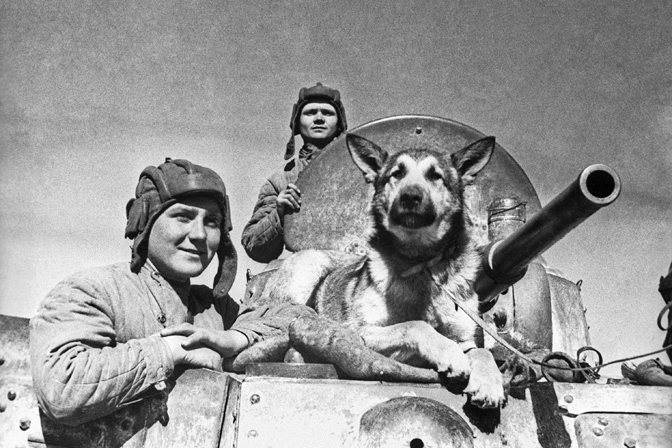Giving the unsung canine heroes of the Eastern Front their due

Great Patriotic War. Scouts, April 25, 1942. Source: ITAR-TASS
Countless lines have been written over the years about the courage displayed by the soldiers of the Red Army during World War II – but very few have been mentioned their canine comrades-in-arms, the specially-trained dogs that accompanied them into battle. About 60,000 dogs of various breeds
An anecdotal story about the Battle of Moscow in the fall of 1941 tells of a group of enemy tanks attacking the Soviet line that supposedly turned back when they saw dogs rushing at them. Fear was justified – dogs were trained to blow up tanks.During the war, Red Army dogs destroyed more than 300 German tanks – equal to two armored divisions.
Canine feats
On sleds during the winter or small carts in the summer, dogs brought ammunition to the
Besides rescuing the wounded, canines were also put to use carrying out other essential tasks such as maintaining communications. During the war, messenger dogs delivered more than 20,000 messages and laid about 5,000 miles (8,000 km) of telephone wires where it was impossible for a soldier to pass.
Meanwhile, dogs also demonstrated an invaluable aptitude for detecting landmines. More than 300 large cities were cleared of mines with the help of dogs. The personal file of a collie called Dick reads: "Conscripted from Leningrad and trained for mine detection work. During the war, detected more than 12,000 mines, took part in demining Stalingrad, Lysychansk, Prague and other cities."
Dick performed his greatest feat in the Leningrad suburb of Pavlovsk, detecting a 2.5-ton clockwork landmine an hour before the explosion. Despite multiple injuries,
Dzhulbars the Alsatian
Despite numerous feats by canine soldiers during the war, an Alsatian named Dzhulbars was the only dog to receive a medal for Battle Merit. During the last year of the war, this sapper dog found a total of 7,468 mines and 150
Dzhulbars' handler was Dina Volkats, the future wife of the country's chief cynologist, Lt Col Alexander Mazover. Before the war,
At the end of the war, Dzhulbars was injured and could not participate in the victory parade in Moscow on May 9, 1945. Marshal Konstantin Rokossovsky reported this to Stalin, who ordered the dog to be carried onto Red Square on its coat. The Alsatian was carried in the arms of Alexander Mazover, who was exempted from the need to high-step and salute – he was responsible for the safety of a very valuable soldier of the 14th Assault Field Engineer Brigade.
All rights reserved by Rossiyskaya Gazeta.
Subscribe
to our newsletter!
Get the week's best stories straight to your inbox